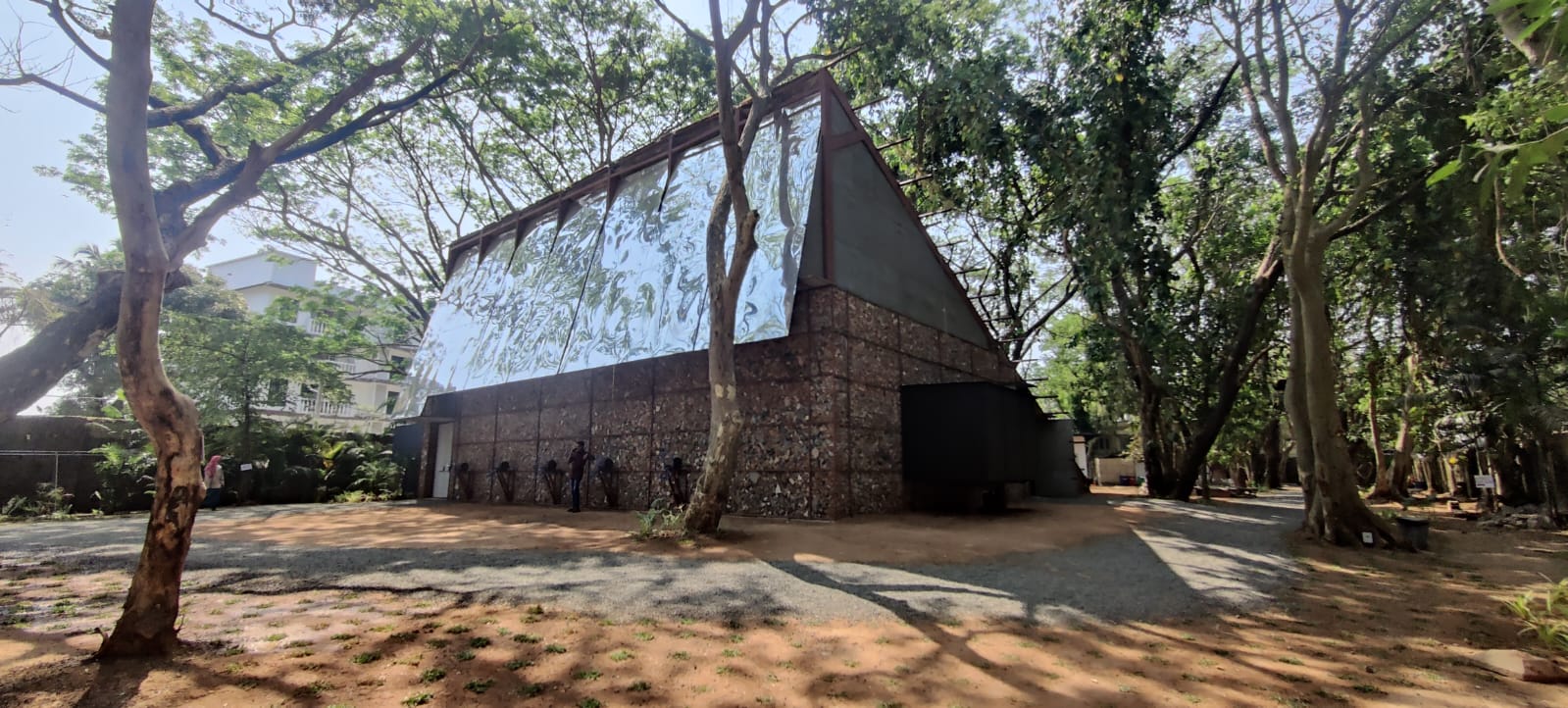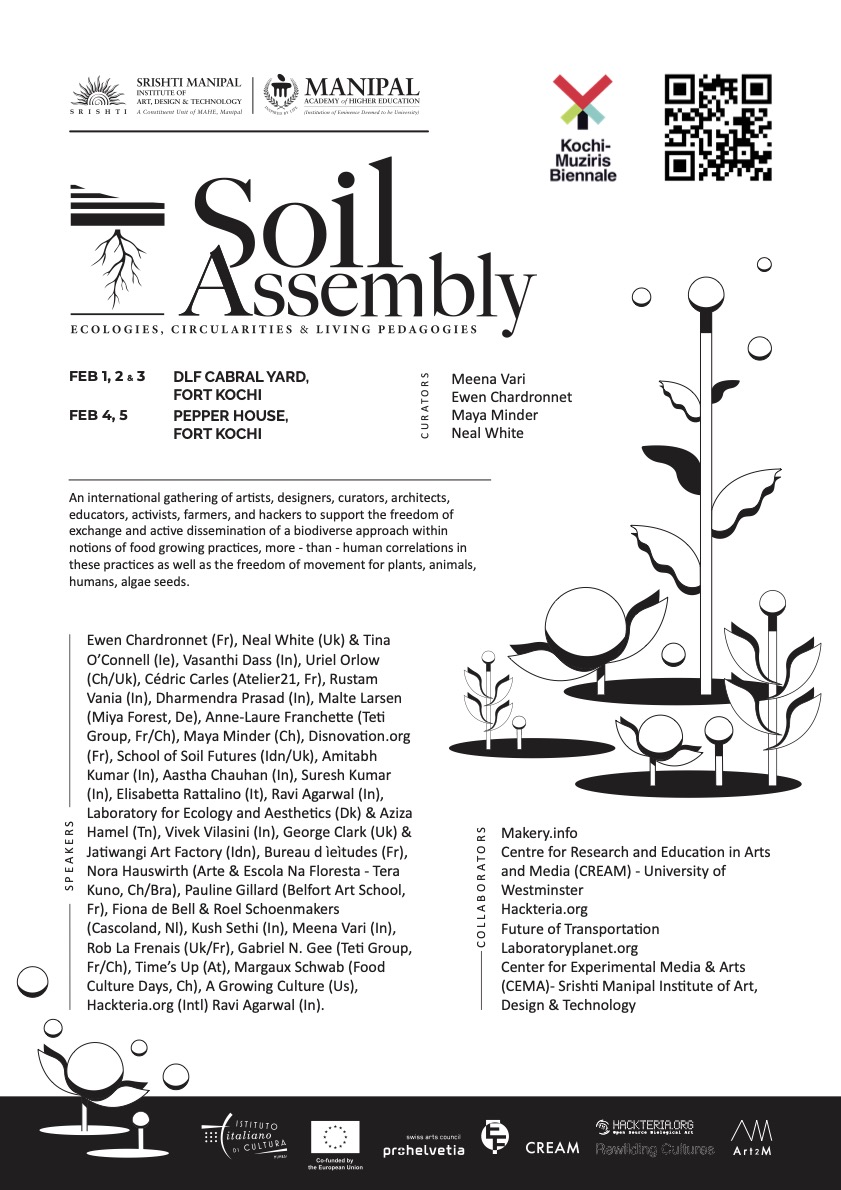The Soil Assembly at Kochi Biennale: Ecologies, Circularities and Living Pedagogies

From 1st to 5th February, in Kochi, India, the Kochi-Muziris Biennale presents ‘The Soil Assembly: Ecologies, Circularities and Living Pedagogies” in partnership with Srishti Manipal Institute of Art, Design and Technology, Bangalore. Makery is partner of the event, as well of the Festival of Ideas at Srishti Manipal Institute on January 28.
This international gathering of artists, designers, curators, architects, educators, activists, farmers and hackers is to support the freedom of exchange and sharing of knowledge. It is an active dissemination of a humanistic/biodiverse/holistic approach within notions of food growing practices, more-than-human correlations (1) in these practices and life, as well as the freedom of movement for plants, animals, humans, algae, fungi and seeds.
With this assembly, we intend to subscribe to the essential convictions that our life on this planet is symbiotically linked to its food resources and its biodiversity, from the tree tops to the deepest groundwater or ocean surface water sufficiently exposed to sunlight.
The first assumption of the “Soil Assembly” is that most human interactions depend on the 20 cm surface thickness of humus so that it is imperative to nurture back the healing balance between human/more-than-human interests so we, humans, do not become aliens to the planetary holobiont. (2)
The assembly will be a voice for highlighting thinking in practice and monitoring developments across local/critical zones, awareness of multi-species futures, environmentally friendly and fair transportation of food and feed, as well as social struggles for agroecology and climate justice.
The assembly aims to connect with a wider audience to highlight the interventions of various creative collectives and individual artists around the world in this field and also wants to show that it is important today to teach and transmit these knowledges in art schools, so that new generations of art practitioners can also contribute to the collective regeneration of the degraded landscapes of the Anthropocene. All these interventions aim to reintegrate and reclaim that symbiotic coexistence we share with diverse species that is the foundation of all life.
(1) This concept of “More-Than-Human” in environmental philosophy appeared under the pen of David Abram in 1996 to counter the nature-culture dualism and the hegemonic exceptionalism of the human being and to open up the spectrum of interrelations between the world of living and non-living beings and that of human societies.
(2) The strict definition of a holobiont is the entity that brings together a host organism (plant or animal) and its interactions with all the microorganisms associated with it. We, humans, live in symbiosis with our gut microbiome. Could we then translate the examples of endogenous symbioses to the scale of ecosystems, biomes and the entire biosphere as holobionts? Holobiont research should aim to achieve advanced understanding in both mechanistic and holistic terms by extending the holobiont concept across spatiotemporal scales of ecological organization (Matissek & Luttge, 2013).

More information on the Soil Assembly website.
The Kochi-Muziris Biennale and the Srishti Manipal Institute of Art, Design and Technology.
This event is supported by ART2M/Makery, ProHelvetia, French Institute and the Rewilding Cultures cooperation program, co-funded by the European Union.
